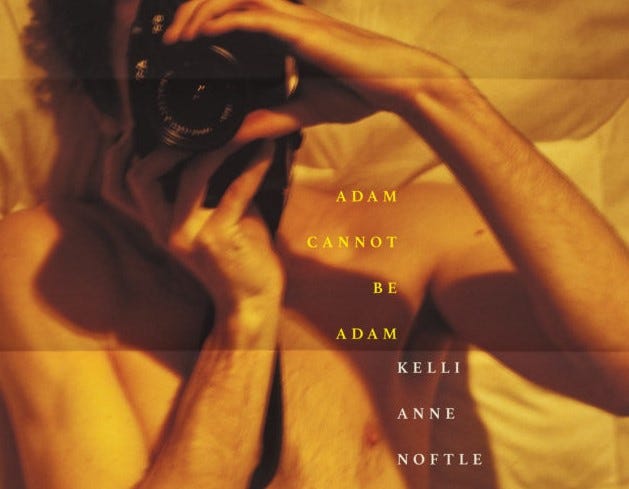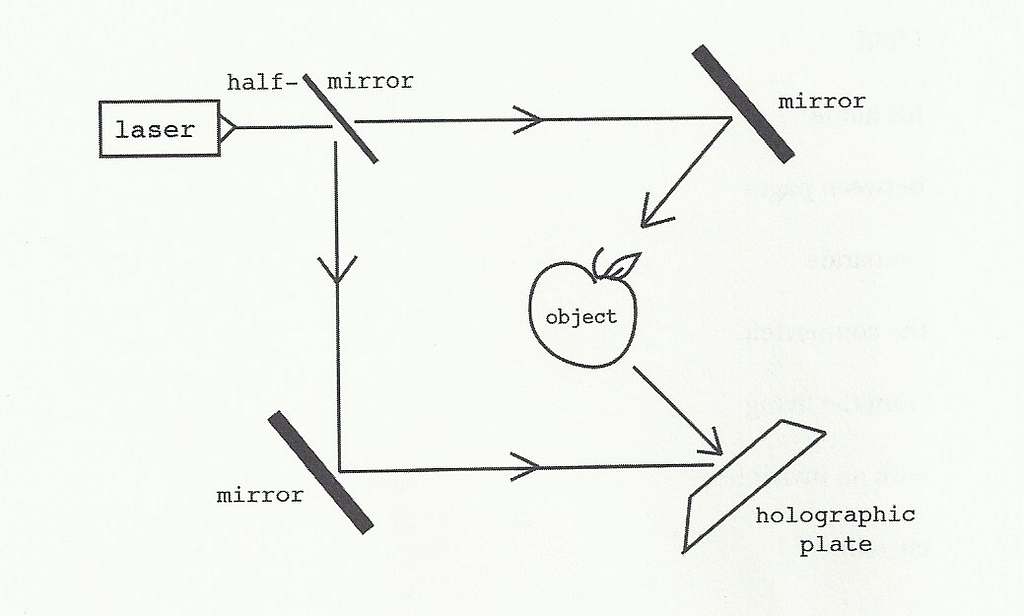
If you have had the occasion to contemplate the origin of the universe, you have a passing familiarity with Einstein’s theory. Einstein sets the foundation for the Big Bang, the most common explanation for this whole…thing we are living in. The theory, however, has some holes. It doesn’t quite reconcile with quantum theory, the long-held explanation for matter and energy. Scientists for some time have chalked these gaps in our understanding up to just stuff we can’t explain.
But earlier this year, a breakthrough in theoretical physics occurred, giving new credence for the theory of what is called the holographic universe. According to physicists and astrophysicists, our three dimensions and the dimension of time could actually be (are you sitting down?) a hologram emanating from a 2D surface. Under holographic theory, the holes in Eistein’s theory start to fill in, and the origin of the universe makes a little more sense, at least to astrophysicists. As Lady Gaga sang, and as Neil DeGrasse Tyson did not, life may in fact be a perfect illusion — as flat as the little shiny square on a credit card.
I’m no scientist, and thankfully neither is Kelli Anne Noftle, which is where the fun begins. As it happens, the new information about holographic theory intersects with the 2017 release of Noftle’s Adam Cannot Be Adam (Omnidawn, 2017), and the news provides a perfect way to establish this book’s universe. A hologram in form, content, and tongue, enamored of gaps and apertures, of linguistic folds and unfolding, of capture and containment, it is a book that lives in this iridescent state where the history of recorded light is a permanent reflection. It is a world with plenty of charms; it can also make a person feel (still sitting?) staggeringly alone. Fun, sure. And terrifying.
While holography is everywhere in Adam Cannot Be Adam, it is the two Adams of its title, in dialogue with Gertrude Stein’s multiple roses, that is at the heart of the book’s narrative. The notion of the two Adams is a reference to Joseph B. Soloveitchik’s essay The Lonely Man of Faith, in which Soloveitchik discusses the two contrasting Adams of the Bible. They are Adam the Utilitarian, from Genesis I, motivated to boldly conquer the universe (think dominion over the fish of the sea, for the sake of brevity), and Adam the Covenantal of Genesis II — submissive, humble, practical (think being put in the garden of Eden to tend and keep it). Similar to Stein’s notorious a rose is a rose is a rose, the two Adams expose the problem of language. With Stein, we do not know which rose is signified and which one is signifier (not to mention figuring out the third rose). This is crucial to Noftle’s examination. Here, Stein’s words end the excerpt:
“Adam the pallbearer
Adam the pianist
I kept you both
alive in order
to write in
order to
fold a thing up to be another thing
getting anything to be inside anything”
The irreconcilable space between Adams creates one of the unfolding tensions (there is a murmuration of them) of this book. The speaking agent of Adam Cannot Be Adam is set within a lover’s triangle, with two of the lovers identically named, one pallbearer and one pianist, one “who works in a textile factory,” the other who “keeps a jar of ten-year-old water on his shelf.” One is signified and one is signifier, both locked in the skin of their own grammar, prompting one of the book’s major-league asks:
“try to decipher
which adam is here
which adam is the name Adam
which adam is the portrait
which adam is the idea behind the word adam
which adam is the original
which adam is behind the curtain
which adam is her
which adam is the one I am pointing to
and away from”
Porous, destabilizing spaces is Noftle’s comfort zone. Her first book, I Was There for Your Somniloquy (Omnidawn, 2012) was named for the disorienting threshold of sleep and wakefulness. In Adam Cannot Be Adam, she has found another perfect playground for someone in the grip of divisions. She is drawn to parted curtains, shafts of light, and gaps beneath doors. She doesn’t hedge when it comes to the debt she owes to Stein. Stein tees-up lines like “Shutters shut and shutters shut,” so Noftle can drive them. She presents multiple possible stories, broken by confessional bursts that can feel like the equivalent of a landscape getting photobombed by a wound: “Now more than ever I want to write about landfills and junkyards and leave the dirt piling up around my ears. […]I want to look at photographs without comparing myself to music to the mark a palette knife makes[…].” Constructed on a foundation of fairly normative syntax, tension is created from the choice of clauses over sentences and from lines strung continuously together so meaning can’t be isolated. Here’s an as example:
“Why the sound of the camera becomes tolerable.
Shutters shut and shutters shut.
Why we say they are cut from the same cloth.
To indicate resemblance, similarity, familial.
The length of her hair in a shapeless veil.
Shutters open.”
As a poetic mode, this is not autobiographical lyric poetry, though the book was sparked, Noftle has said, by a real love triangle with two men of the same name. The book’s sections, oceanic stretches of poems without titles, are introduced by epigraphs from Soloveitchik, Stein, Lyn Hejinian, and Susan Sontag, among others. There is information from explainthatstuff.com and pages of crude diagrams, all in service to filling holes in the ruptured stories they sit between. Noftle folds in wonderful grammatical Easter eggs. For example, the data that support the holographic universe theory was discovered within what is referred to as white noise — the microwaves left over from the moment the universe was created. In Adam Cannot Be Adam, a white noise machine facilitates the speaker and her lover’s sleep.

Stein once said about her most popular line that the “excitingness” had been withdrawn from language, and in her poem, “the rose is red for the first time in English poetry for a hundred years.” By exploiting the reader’s impulse to parse the grammatical equation, Noftle re-reds the rose. A is not A; it is a barrier, not an equation. Readers leaning in to balance the unbalanceable in a book where “in this sentence meaning collapses,” constantly changing narratives where “holography is also a metaphor,” and “an orange is not an apple exactly,” and “Adam cannot be adam,” must yield to the enchantment. That’s the fun. As a reader, we are implicated. That’s the terror.
When the language of poetry is foregrounded it can stimulate the intellect — it is our participation that makes it alive. Language, Lyn Hejinian said in The Language of Inquiry, rarely “comes to terms,” rather it is “transitions, transmutations, the endless radiating of denotation into relation.” As a result, it can be unbeautiful in its remove. In fact, the speaking agent of this book is one cool customer. Her art-making is the result of a fixation with simulacrum, not of ardor. She sees her lovers as specimens, not objects of desire. Sex is merely a parting of space, and she pursues Adam to “turn his disease into my thesis.” Brr. But there are moments of softened lyrical engagement, as if her agency is the fertilizer for the longing that propagates there, just as the jar of water Adam tends turns to a mysterious breeding ground. She capitulates to being no different from those who see Jesus in their grilled cheese, longing for humanity and duped by the structure we impose upon it, asking, “The simplistic drawing of three circles and a line on the side of a building — whose smile is that?”
This excerpt, lovely in its despair, is half-way or so in:
“Whatever the land holds, it wants to uproot.
So I use metal frames, mechanical pencils, vellum from calfskins.
Inspired by unexpected resemblances.
We’re born with this one face and isn’t it enough
In his story, the desert is filled with figs.
A painting of the landscape reverses this statement.
Between thirst and indifference.
Between a rock and a featureless place.”
Two-thirds into the book, Adam sifts through scattered items in a junkyard. An attempt to capture and isolate the surroundings leads to an apocalyptic scrimmage of merge and scatter, a quasi-resolution of the book’s central dilemma that captured me when it came. Having lived through its pages, I had gone there, to Noftle’s credit, too — its agony and longing palpable, irreconcilable.
“[…]
Let us try to abandon structure.
Why we are consumed but not ruined.
For instance, within the blur is the actual image.
When we try to hide Adam from Adam.
The senses interfere.
The way leftovers get distributed, spread out.
Adam covering his face with his hands.
For instance, if you sift between sentences.
Let us frame this Adam or the other.
Suspended as a particle in a shaft of light.
Let us name his reflection before it scatters.
[…]”
A poetic sequence that explodes on the page around an imaginary axis follows. It is a release from containment of sorts. The camera fights to reduce Adam to his true two-dimensional nature. Here, we see Noftle engaged in critique. “Hold still,” the photographer says. “I don’t want to do it,” Adam says . The sequence is unsettling, destabilizing in every sense.
Soloveitchik suggests in The Lonely Man of Faith that those who look to faith for comfort have been misled. Faith, he says, is not about comfort but about the discomfort of confronting dichotomies. For Noftle, that is the space we inhabit, and the two Adams, at odds with one another, are of course, a problem that exists within us. Today more than ever, contemporary culture is without simple truths or stable foundations. Alas, we are Adam I, in Soloveitchik’s view, imposing ourselves upon the world, and what’s worse, we pretend we are keeping the garden. “Let us occupy each part of a two-fold confusion,” urges Noftle. In this space, in this pseudogap, if we are engaged then we are changed. It is a contingent solution. But she cautions the reader from the beginning: In this story the answer has two faces. / It is a gift.
The Space Between: Inhabiting Kelli Anne Noftle’s Adam Cannot Be Adam was originally published in Anomaly on Medium, where people are continuing the conversation by highlighting and responding to this story.
